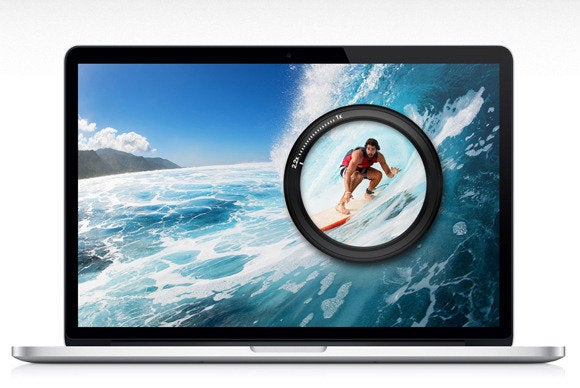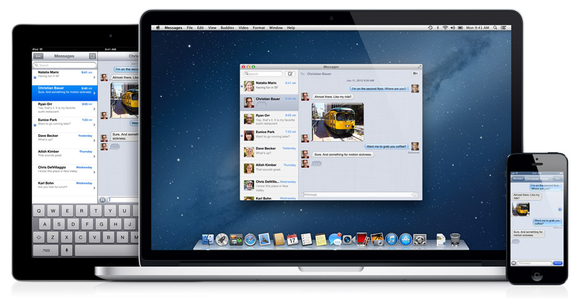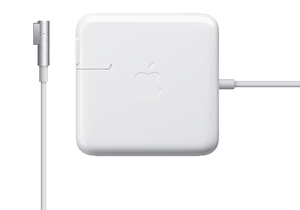Even if the grass isn't greener on the other side of the fence, there's nothing wrong with tossing the occasional glance at your neighbor's fetching petunia patch. What, weak metaphorical analogies aren't your thing? Let's start again then.
Say, Macs have some enticing features, don't they?
Wait! Before you grab your pitchfork and start screaming for blood, remember that a deep-seated love for all things computing-related is literally a job requirement here at Central IT. That said, Macs are PCs, too, and Apple's computers sport several stunning OS X specialties that have no native Windows analogue.
While these features aren't amazing enough to lure diehard Windows enthusiasts over to the fruity side, Microsoft would be well-served to steal these particular tricks from Apple's playbook.
1. Frequent operating system updates
The world of technology blazes by at blink-and-you'll-miss-it speeds, and the pace has only become more blistering in the few short years that smartphones and tablets have been on the market. Microsoft's traditional three-year release cycle just doesn't cut it anymore. The iPad, Siri, Google Now, touchscreen everything, cloud syncing services, and tons of other revolutionary technologies hit the market in the gap between the releases of Windows 7 and Windows 8, causing Microsoft to remain a perpetual step behind the competition.
Apple releases OS X updates on an annual(ish) basis, and fortunately, Microsoft looks poised to follow. Microsoft recently announced its intentions to transition toward a "continuous development cycle," and the recently leaked Windows Blue update is said to be the first of many annual upgrades for Windows. Our fingers are crossed.
2. Retina displays on laptops
C'mon, you knew this was going to be on the list. Why hasn't the MacBook Pro's drool-worthy Retina display crossed the divide, yet? Indistinguishable pixels are the greatest thing since sliced bread, massage chairs arguably aside.
Samsung showed off a Series 9 notebook with a 2560-by-1440-pixel display at the IFA trade show in Berlin last year, but when it came time to officially announce the model, it was saddled with an attractive yet pedestrian 1080p display. Now, a 1080p looks wonderful on a standard 13-to-15-inch laptop—it just doesn't look as wonderful as a silky-smooth Retina display.
Don't expect to see Retina-quality displays in Windows laptops any time soon, though. The high resolution gobbles up batteries in short order, which is nothing less than a kiss of death in a mobile device. Plus, their sky-high cost limits them to premium notebooks—a low-volume market for Windows PCs. Finally, even Apple can't sell these things. The first full quarter that the MacBook Pro with Retina was on the market saw only a 1 percent improvement in Mac sales compared with that period the previous year.
Sigh. For now, the future is pixelated.
3. Messages
Of recent additions to OS X, one of the more handy is its Messages integration, which allows you to send texts to iPad, iPhone, and iPod touch users right from your desktop using Apple's homebrew messaging service. The carriers don't like it, but users love it—and it would be a great feature to find in Windows.
A baked-in Windows communications solution would cut down the myriad headaches associated with simply setting up a computer-to-computer conversation with your pals. Gone would be the days of wrangling accounts on AIM, GTalk, ICQ, Yahoo Messenger, straight-up SMS, or any other service your friends may or may not be using. Crucially, it would also serve to more deeply integrate Windows Phones and tablets into Microsoft's bourgeoning Windows family.
Microsoft already owns the backbone it needs to introduce just such a service in even better form: Skype. Skype-to-Skype calls and instant messages are completely free and work like a charm across a plethora of platforms, and you can already merge your Skype account with your Microsoft account. It wouldn't take much to preinstall Skype on Windows machines and bake access in with new Microsoft Accounts.
4. Notification Center
Yet another mobile invention that works wonderfully on the desktop, OS X's Notification Center gives you a list view of all your recent updates and notifications, making sure you never miss something important.
Windows 8 pops up a notification tile in the corner of the screen when new events occur, but it disappears within seconds, rendering it useless if you happen to be away from the computer at that exact time.
Live Tiles act as a lackluster pseudo-Notification Center, but to see the information, you have to take the initiative to jump back to the modern-style Start screen, and then stare at the shifty panels until you're certain that they don't include any more vital information. If you're away from the Start screen, no on-screen indicator other a disappearing notification tile (as mentioned above) warns you that you've missed an event—you just have to magically know to check your Live Tiles for an update.
Simply put, this cobbled-together system is far from ideal, and it's far less useful than OS X's Notification Center.
5. Universal power adapter design
Some people collect knick-knacks. I collect laptops. Not intentionally—it's just a side effect of writing about computers and computer-related things for a living. Sitting on the shelf next to me right now are several notebooks from Asus, HP, and Lenovo, and one thing about them makes me very angry.
None of their power adapters is interchangeable. I can't use my HP's adapter to power my Asus laptop, or do this with any other mix-and-match combination you can dream up.
While the use of different adapter connections makes sense from a business perspective—how else will manufacturers charge you for another one if you lose the original?—it's terribly frustrating on the consumer end of things. Every minute spent looking for a specific power adapter when there's another perfectly good one sitting five feet away is nothing short of a waste of your limited time on this earth. Give us ubiquity!
Apple has, with its MagSafe adapters.
Sure, there are some technical limitations. An 85W MacBook Pro MagSafe adapter charges a MacBook Air a lot better than a 45W MacBook Air adapter does a beefy MacBook Pro, but hey, at least a MagSafe adapter will work with either type of notebook.
Apple tossed a slight kink into things with the introduction of the MagSafe 2 in its 2012 notebooks. A MagSafe 2 adapter works universally with Apple's 2012 MacBook Airs and Pros, however, and you can buy a converter to use your older MagSafe adapter with a newer MagSafe 2-equipped laptop. Why can't we get that kind of cooperation in the Windows world?
6. iCloud document syncing
If you sign in to Windows 8 with a Microsoft account, you already have the option to sync a ton of settings across multiple PCs, and the Windows Blue leak suggests that even more handy-dandy syncing features are on the way. Given that, it's mildly surprising that the hyper-connected Windows world is missing a key iCloud feature: Document and note syncing.
You can put a makeshift solution together, though it lacks the elegance of iCloud's automatic syncing of every document. Using Office 365 (or a mixture of a traditional word processor program and the SkyDrive desktop app, which doesn't come preinstalled with Windows) to save your files directly to SkyDrive mimics iCloud's functionality, albeit only after installing the appropriate software—and fiddling with said software's settings—on each PC you use.
Sure, the workaround gets the job done, but it's a lot more hassle than iCloud's seamless solution, and nonnerds would never think of it.
Microsoft might just crib iCloud's document syncing sometime soon. "Our product groups are also taking a unified planning approach so people get what they want—all of their devices, apps and services working together wherever they are and for whatever they are doing," Frank X. Shaw, Microsoft's communications VP, wrote in a recent blog post. The end goal is the ability to sit down and just start using any Windows device you come across as easily as you use your own. Bring it on!







